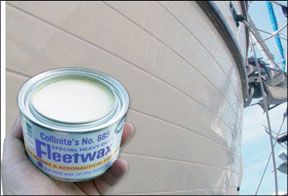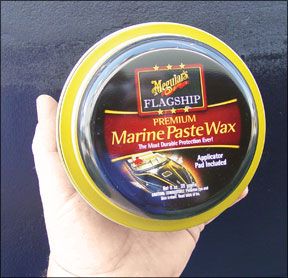The number of marine wax products on the market is staggering, and Practical Sailor has commissioned a series of projects to help readers make sure they get the best and longest wax protection for their money and effort.
Our most recent full-fledged wax test ran for little over a year, with the results posted in the Nov. 15, 2004 issue. A test of cleaner-waxes-a different animal-was carried out in 2006-2007, with Star brite Heavy Duty Cleaner Wax and Restructure Marine Cleaner Wax coming out on top (Practical Sailor November 2007).

Prior to those tests, a series of articles dealing with gelcoat protection were published. Two are posted online at www.practical-sailor.comunder the “Tools and Techniques” section: “Plastics Versus Weather: The Nature of a Losing Battle,” an interesting read for those curious about the chemical battles between your boat and the environment; and Nick Nicholsons “Offshore Log: Gelcoat Maintenance,” some hard-earned how-to-tips on gelcoat maintenance.
Before starting another full-blown test of marine waxes, Practical Sailordecided a head-to-head test that pitted two past champions against each other was appropriate. Although some liquid waxes were noted for their outstanding gloss in the 2004 comparison, the longevity awards went to two paste waxes: Collinite Fleetwax No. 885 and Meguiars Mirror Glaze, both of which were still beading water after one year.
This year, Meguiars launched a new line of Flagship marine waxes, including the Premium Marine Paste Wax ($13 for 11 ounces at www.defender.com), and the promising rookie seemed a logical choice for this head-to-head challenge. From Collinite, we stuck with the Fleetwax No. 885 ($18 for 12 ounces at www.defender.com).
Both products are premium paste waxes designed to provide a durable finish, but there is a clear difference in the formulas: The Collinite is based on high-quality carnauba wax, which Meguiars contains none of. It relies on a polymer finish to protect.
Both products can be applied by machine. For the test, however, they were laboriously applied by hand to the hull of our test boat, a 1978 36-foot Union Cutter (hull finish is original gelcoat and in very good condition). Collinite was applied to the starboard bow and port aft sections, while Meguiars was applied to the port bow and starboard aft sections, giving each wax equal exposure.

In terms of application, Fleetwax had more of an “industrial strength” feel to it as compared to the Meguiars-the wax itself was noticeably firmer. It went on fairly smoothly and produced an excellent gloss, but heed the manufacturers warning: Buff before it dries, or youll pay with more elbow grease.
The Meguiars was creamier and much quicker and easier to apply and buff. Both it and the Collinite have a mild polishing component that lightly clean the hull and help remove swirl marks. The resulting finish was also very glossy.
It is far too early to make a conclusion on durability, but we expect both products to last at least six months, while the test boat will be sailing the Chesapeake Bay. So, if you plan to wax again in the fall, the less-expensive Meguiars is a serious contender. However, the Fleetwax has proven very durable in past testing, and thats where were putting our money for now.

































